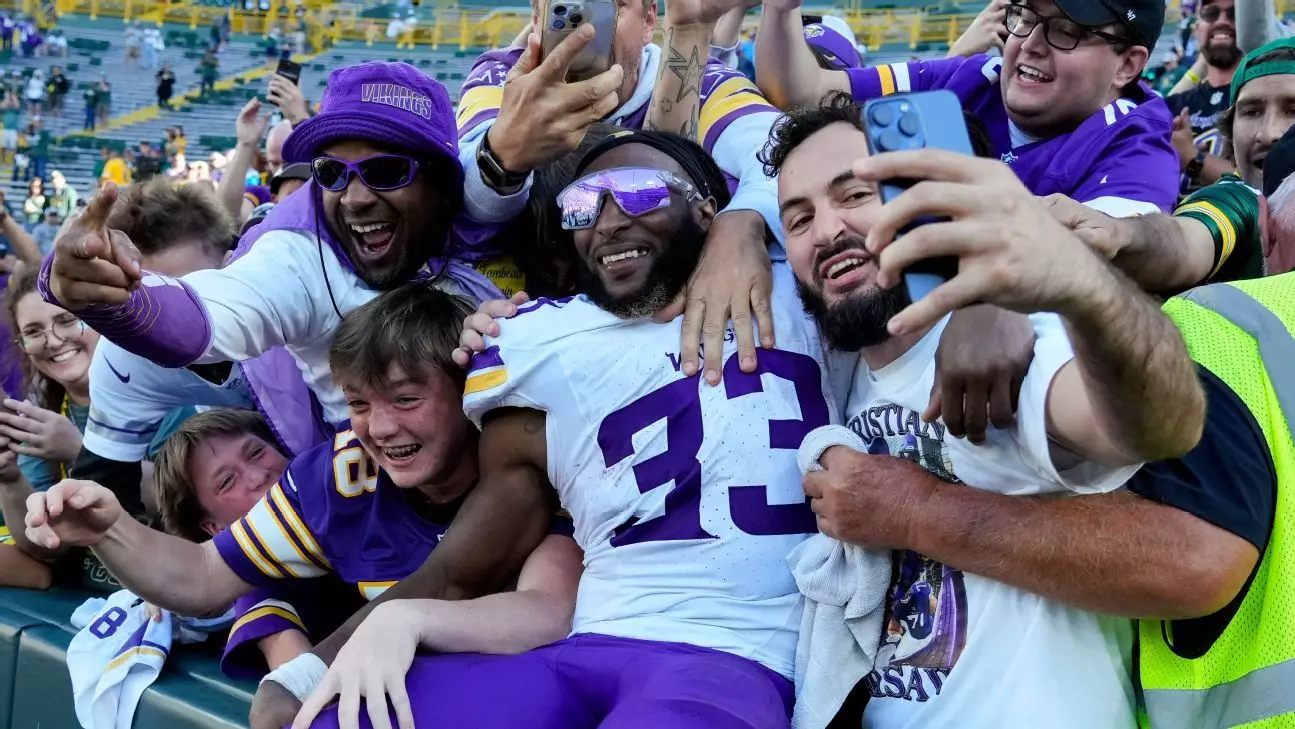The Minnesota Vikings find themselves at a pivotal juncture as they seek to redefine their backfield strategy heading into the offseason. One key player in this mix is veteran running back Aaron Jones, who has had a significant impact since joining the team. However, the Vikings face challenges as they navigate his potential return, evaluate roster options, and consider their overall offensive philosophy.
Last season, Aaron Jones showcased his abilities, recording a remarkable 306 touches and 1,138 rushing yards, making it one of the most productive years of his career. Despite struggling with various injuries, he managed to play through all 18 games, demonstrating resilience and commitment. His performance not only highlighted his skill but also illustrated the risks associated with over-reliance on a single player. The Vikings enjoyed his contributions but must now contemplate whether a repeat of such a heavy workload would be sustainable moving forward.
Head coach Kevin O’Connell has been clear about his desire for Jones to return, acknowledging the veteran’s contributions while also signaling a need for a more balanced approach. O’Connell noted that historically, Jones has thrived as part of backfield committees, but he was thrust into a primary role last season. The implications of this heavy usage raise questions about the best strategy for both Jones and the Vikings as they prepare for the upcoming season.
The Vikings are not just weighing Jones’s performance; they are also considering how to enhance their depth chart through both free agency and the draft. The franchise has shown interest in a robust class of free-agent running backs, including notable names like Najee Harris and J.K. Dobbins. Yet, the Vikings also have a pressing need to strengthen their offensive and defensive lines, complicating their approach to drafting a running back. With limited draft capital, they must prioritize effectively to address multiple areas of concern.
This dilemma exemplifies the broader challenge that coaches face in balancing immediate needs with long-term roster building. While adding a young talent could bring fresh energy to the backfield, it may detract from other pressing needs, such as fortifying the defensive secondary, which is at risk of losing key players to free agency.
The Strategic Shift Towards a Balanced Attack
Throughout O’Connell’s tenure, the Vikings’ offense has evolved significantly, particularly with the aim of accommodating superstar wide receiver Justin Jefferson. The statistics indicate a heavy tendency to favor the passing game, as evidenced by the Vikings ranking low in designed rushing plays over the past two seasons. This emphasis on the aerial attack has been reflected in their strategy, especially during Kirk Cousins’ tenure as quarterback. However, a transition to a more balanced offensive scheme appears to be on the horizon.
The Vikings’ 2024 offensive strategy may need to adapt further as they transition to a new quarterback in J.J. McCarthy. In this context, bringing back Jones, albeit possibly in a reduced capacity, could be beneficial. His experience as a veteran running back could aid in stabilizing the backfield while providing McCarthy with a reliable option. However, the team must ensure that the chemistry between their offense’s key players translates into on-field success.
Looking Ahead: What’s Next for the Vikings?
As the Vikings address their backfield situation, several critical decisions loom large. If Jones is retained, he will likely have to adapt to a different role, which could align more with his strengths while also safeguarding his health. The prospect of introducing younger running backs through the draft could provide the team with a fresh look while allowing Jones to mentor new talent.
Additionally, priority must be given to the Vikings’ overall roster construction, ensuring that all areas are reinforced solidly. The integration of free agency strategies and effective draft choices may allow the Vikings to simultaneously enhance their backfield and address other crucial aspects of their team.
Ultimately, as the Vikings head into a consequential offseason, the decisions surrounding Aaron Jones will reveal much about their strategy for the future. Whether they opt for a high-usage route or embrace a committee approach will significantly impact their offensive identity as they aim to reclaim their competitiveness in the NFL. The decisions made in the upcoming months could set the tone for the franchise for years to come.

